Review: 2010 Nissan Maxima
Fifteen years ago, Nissan’s Maxima was one of a handful of genuinely sporting four-doors that wouldn’t saddle you with German car payments or reliability. After a decade of letting dozens of overpowered family haulers whittle away at the Maxima’s individualism, Nissan upped the game for 2009.
Since we’re talking about what was once billed a four-door sports car, let’s dive right into performance.
Coming from a daily driver down by over a hundred horsepower, the Maxima’s engine is just tremendous. The car launches with a firm shove limited just a touch by traction control, but it’s the range from 25 MPH to 70 that really impresses. Flooring it yields the oddest sensation of controlling the speed of other drivers. Very quickly, they all start to move backwards. There is some torque steer, though nothing I couldn’t handle with a single firm hand. This car lives for speeds between 70 and 100. It has significant passing urge even at 85, where most sub-250 HP cars I’ve driven require far more planning. Pity then that the highest limit in the U.S. is 5 MPH less.
Road noise at that speed is minimal. Wind noise is more pronounced, and I noticed a subtle whistling from behind me on my rental with thirty-thousand miles. Nissan has heavily damped engine noise from the outside, so most of the aural enjoyment comes with the windows closed. I’d heard that the 3.5L had lost some smoothness at the top end relative to VQs of lesser displacement, but if that’s so, it certainly wasn’t evident with
this version. This VQ sounds like it could hold at redline all day without a care. I could stand to hear more of it by half both in and out.
Prior to the Maxima, I’d had no experience with Nissan’s variable CVT transmission in any form. I came away from this one impressed. In Drive mode, it feels like an automatic with no shift points. It has the same creep at slow speeds, and the subtle wheel vibration of a car in gear when stopped. Slow acceleration keeps the engine around 2000 RPM. It otherwise loafs at 1200 RPM, imitating the practiced boredom of a Corvette in high gear.
This yields terrific mileage. Another more moderate driver in the family reported 28 MPG in a mix of highway and around-town cruising.
Wood the gas and the engine will zing to 4500 RPM, slowly rising to near redline as the car accelerates. If you’re aggressive, the system will assume you want to play and will hold 2500 RPM for a few seconds until it thinks you’ve relaxed. The heightened revs persist if you shift into Sport mode by moving the stick to the left gate. Sport can also add predetermined shift points to the CVT, an affectation that does no favors for acceleration. Even so, shifts are very quick. Holding a low gear and letting off the gas slows the car as if restrained by a giant hand. The connection isn’t quite as direct as a true manual, but it’s an interesting gimmick and sharper than any automanual I’ve tried. I personally found Drive so effective that Sport was superfluous. If selecting pseudo-cogs has more appeal to you, order the Maxima SV with paddle shifters. It takes much more concentration to keep the car pointed in the right direction at full tilt when you’ve devoted a hand to the gear lever.
I was uncertain at first what to make of the brakes. The pedal is touchy at the top of the range, and it took me over an hour to consistently stop without lurching. My fifth-gen Malibu is positively wooden by comparison; the pedal pressure in that one is probably three times greater for the same effect. Ultimate braking power is very high, though the ABS engages only when you’re near the stops. I think the car would benefit from a less linear braking curve, with reduced initial bite, but much more rapid deceleration in the bottom half of the travel. It’s too easy to use less than the car’s full braking ability. The ABS action is far more refined and effective than the Malibu’s, though a Porsche Cayenne is smoother still. This is gentle criticism; on the whole, I was pleased with the strength and consistency of the Maxima’s braking performance.
Grip limits were beyond my purview in this test. The base Goodyear RS-As have more than the engine can use. On dry roads, it took full steering lock and the gas to the floor to get any obvious engagement from the traction control system, and that was only for a moment. Disabling Nissan’s VDC stability control (and TC by extension) gave slightly quicker acceleration off the line. Handling was unaffected because I couldn’t make myself drive in a way that would activate VDC. Anyone hooligan enough to be bothered by it should probably leave it on.
Those accustomed to the hairy-chested steering of a genuine sports car might find the Maxima’s wheel too emasculated for comfort. The leaden heft of a sport-package BMW at slow speeds is nonexistent in this car. It’s no more difficult to maneuver in a parking lot than an old Buick. That persists until about 40 MPH, when the wheel quickly and noticeably firms to a level still a few notches below where I’d like it to be. This weighting lends the Maxima an unnatural eagerness to change direction in slow turns. Handling seems to improve as the lateral forces increase; the real fun is in long, high-speed sweepers that liven the steering and let the car take a set. Highway stability is exemplary. The Maxima never feels as agile or sporty as a G37, but this seems less a chassis limitation than a mental trick. The ample cockpit and vanishing hoodline impart a bigness that encourages methodical driving. Dynamics aside, there are more intimate partners for channeling your inner Andretti on the backroads.
Interior quality seems at least as good, if not better than a cira-2007 Infiniti FX35. It makes the G8’s feel low-rent for reasons obvious even in pictures. My Maxima had leather accents and cloth seats with a vaguely suede-like finish. No lumbar support that I could find, but I was just as fresh after an hour in the seat as I was before. Coming from someone with back issues, this is a major achievement. There’s no shame opting for cloth over leather, if you can stand the fetish it seems to have for lint.
Side bolstering in the front seats is significantly tighter than the G8. Where that seat felt cavernous, this one extends only an inch or two more than I’d like. Bonus points as well for a beltline low enough to rest an arm on the window sill, and a comfortable armrest for the other. The rear seat is suitable for large people. I’m just over six feet, and when I set the driver’s seat to my preference, I still have two inches of knee clearance in the rear and at least one to the headliner.
The Maxima S is well-equipped for a base vehicle. All S models have a sunroof, driver and passenger electronic seat adjustments, a folding rear seat, and an auxiliary stereo input. Much of the value of the Maxima is here; while the SV can be optioned with larger wheels and all manner of gadgets, none of it is essential to enjoying the car. With rear-wheel-drive competition prowling the market in the high thirties, the point of
diminishing returns for an enthusiast approaches rapidly.
Pictures do the Maxima’s styling little justice. The exaggerated Coke-bottle shape of its side bulges is much more attractive in person, concealing the car’s mass like a European suit would a sprinter. While it doesn’t inspire the lust of a Mustang or an M3, it does look classy and upscale in a way that an Accord or equivalent can’t match. The gaping maw of this Maxima is a lesser styling faux pas than the whole of Acura’s product line. Neither that, nor the awkward rear detailing is enough to turn me off to the rest of the car. Visibility from the inside suffers from strong A and C pillars, though not so much that I found it an impairment. Vettish front wheel arches add a bit of subtle aggression from the driver’s seat.
Before I was given the choice between a Focus and a Maxima at a rental agency, the latter wasn’t even on my buying radar. It’s since found a permanent home in my driveway. This is partly because of the Maxima’s unique brand positioning. A variety of V6-equipped sedans, including Nissan’s own Altima, can match the premium feel of the Maxima S for a few thousand less. None, however, are quite as fast, stylish, or sporting.
Luxury brands afford incremental improvements in speed and sport, but only after you leap the no-man’s-land between $30,000 and $35,000. The most apt competitor is actually the front-wheel-drive Acura TL, but that car bests the Maxima only with toys; it’s otherwise slower, less attractive, more ponderous, and quite a lot more money. Save for the ugly, the same could be said for the Hyundai Genesis. If you want fun, space, and style for less than thirty large, the Maxima S is one of the only games in town.
More by David Alexander
Latest Car Reviews
Read moreLatest Product Reviews
Read moreRecent Comments
- Carson D Just don't be the whistleblower who reports on the falsification of safety data. That's a deadly profession.
- Carson D I'd have responded sooner, but my computer locked up and I had to reboot it.
- Todd In Canada Mazda has a 3 year bumper to bumper & 5 year unlimited mileage drivetrain warranty. Mazdas are a DIY dream of high school auto mechanics 101 easy to work on reliable simplicity. IMO the Mazda is way better looking.
- Tane94 Blue Mini, love Minis because it's total custom ordering and the S has the BMW turbo engine.
- AZFelix What could possibly go wrong with putting your life in the robotic hands of precision crafted and expertly programmed machinery?



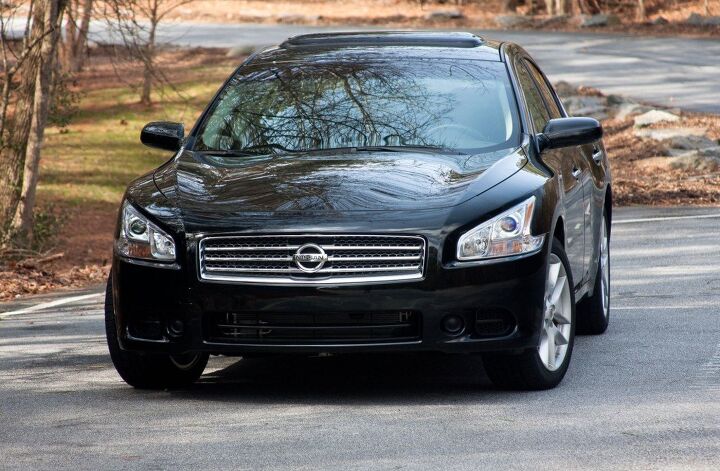




























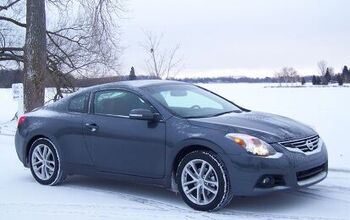
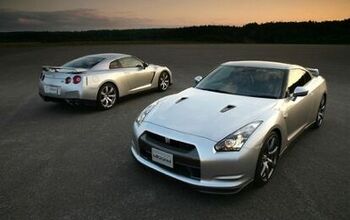

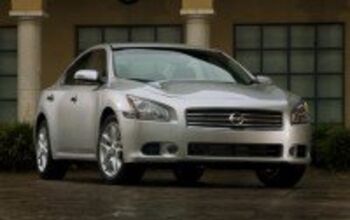
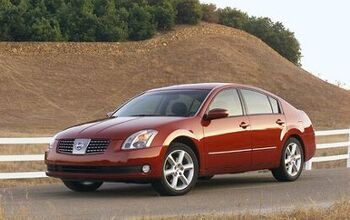










Comments
Join the conversation
This is a great review and right on in my experience. I replaced my 1998 Maxima with a loaded 2009 (essentially the same as the 2010) and everything you've said good and bad is right in my view. First, fully loaded, I think you'll find its still thousands less expensive than a loaded BWM 3 class, Mercedes C, etc (perhaps not a base one, but that's not comparing apples to apples). I'd recommend trying an Altima as well to see if they price difference is worth it to you. That's a judgment call. "A fine daily-driver with enough sport to keep the ride home from dulling into a haze" is a very nice summary David. Two years later I still love driving it.
Wonderful review. I don't know how many times I've read it over the last year as I shopped for a new vehicle. And this last Friday I bought a '12 Maxima S with the Limited Edition package. $5k off, even. So far so good; waiting for good weather and some long highway cruises. The only things I don't like: no remote start (!) and a somewhat mediocre base stereo. But ah, the cloth seats, the headroom, and the smooth CVT!